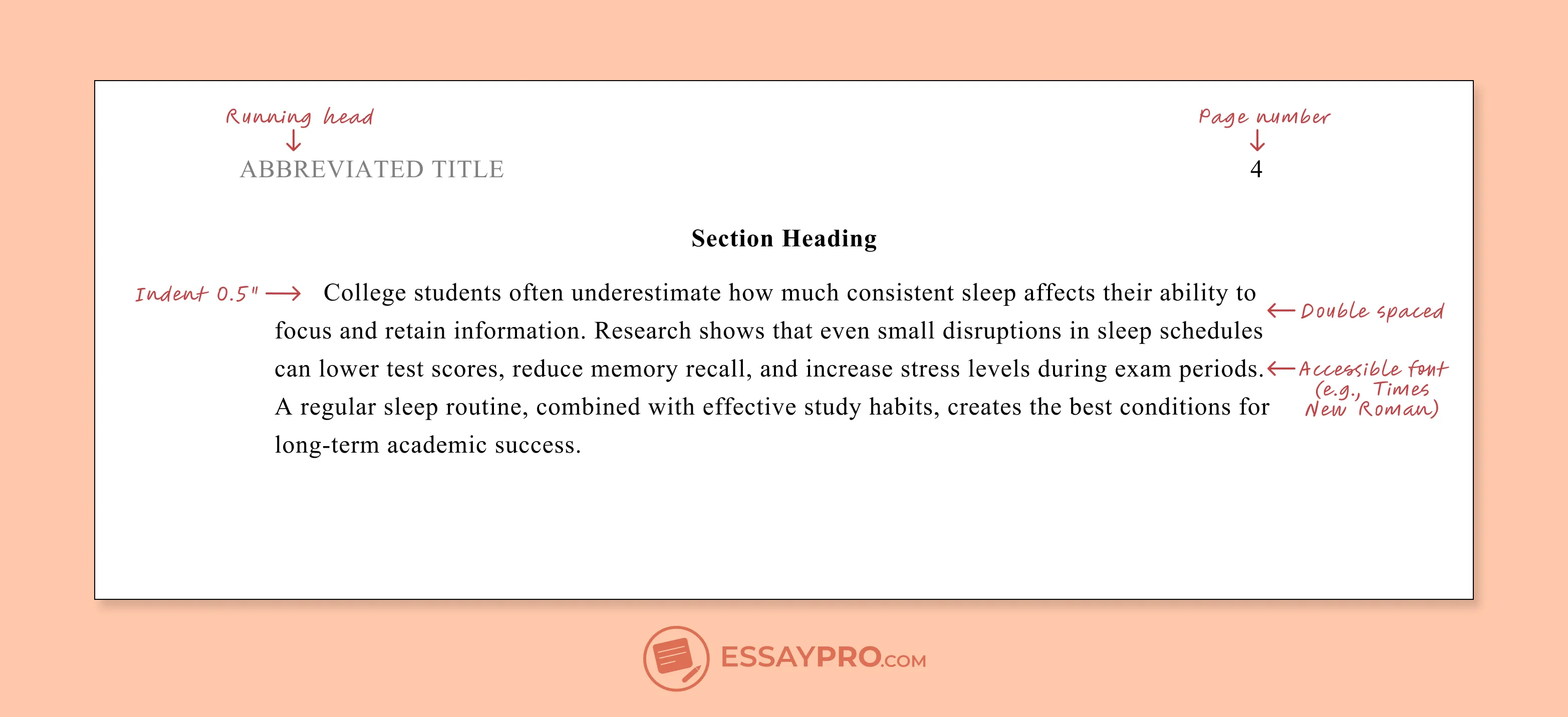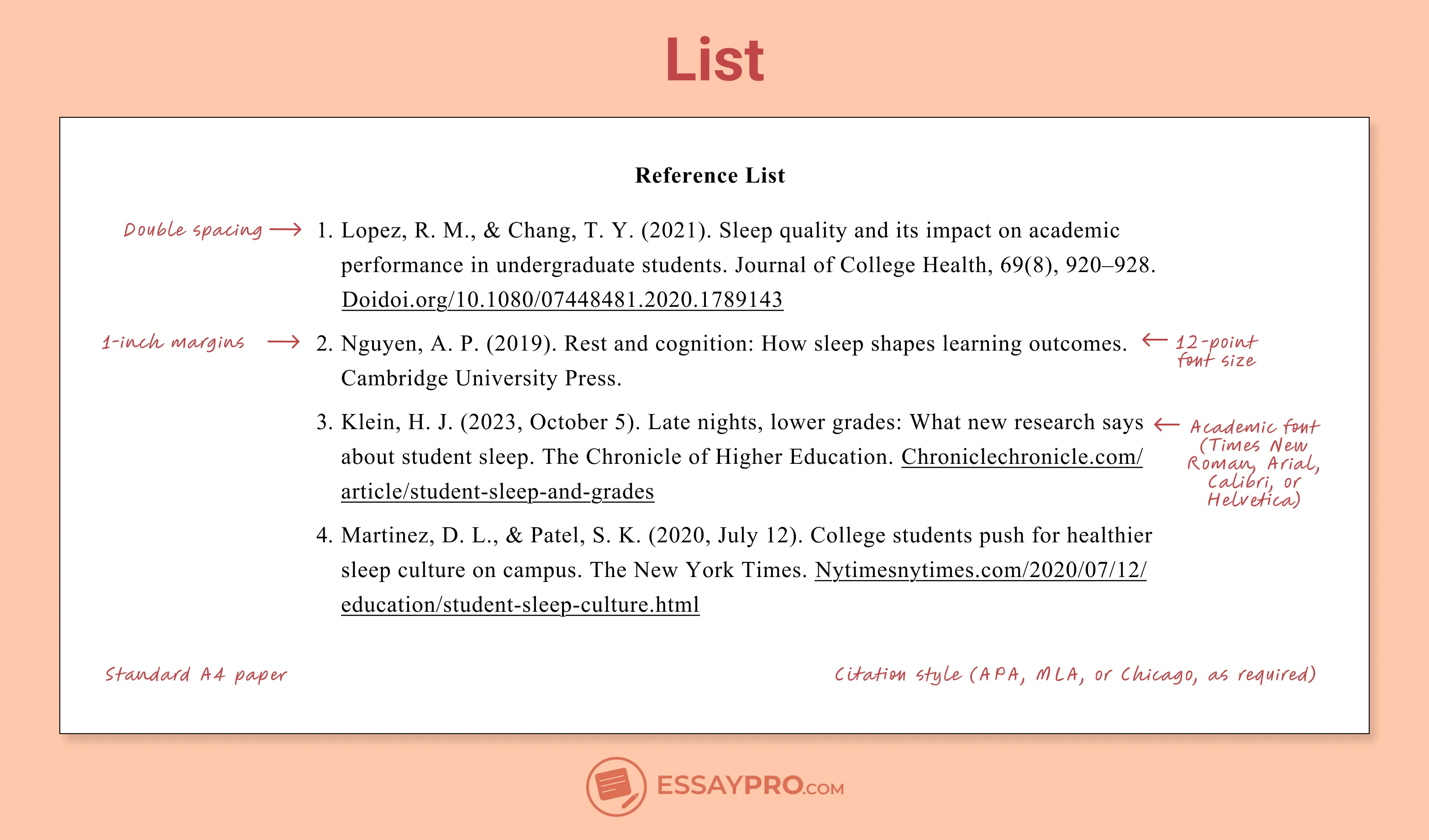APA format is the official writing and citation style created by the American Psychological Association. Its purpose is to provide clear rules for how papers should be structured and how sources must be cited.
The format has become the standard in psychology and sociology. It's equally important in education and other disciplines where precise documentation of sources is expected. At the center of this system is the Publication Manual of the American Psychological Association (7th edition). This manual outlines every detail from page layout to reference formatting.
This article will make the APA slightly less intimidating for you. And yet, it's understandable if you'd rather focus on writing instead of formatting details. A lot of students end up typing 'write my paper' into a search bar in moments like this. EssayPro's writers are here for exactly that moment.


Formatting Rules for an APA Paper
The page must be set up correctly before you start writing. A paper written according to the APA format guidelines is clear and consistent, so it’s easier to read. The rules that seem strict at first become familiar after you use them a few times. Paying attention to these details shows care for both presentation and academic standards.
- Font: Times New Roman, size 12, should be used because it is simple and easy to read.
- Margins: Set one-inch margins on every side of the page to create uniform spacing.
- Spacing: Keep the entire document double-spaced.
- Page Header: Place the page number in the top right corner of every page. Professional papers may also include a shortened title in the top left.
If you'd rather not worry about the setup at all, an APA paper writing service can take that part off your plate so you can focus on your ideas instead.
Headings and Organization in APA
Headings in APA give students a structure to organize content and inform the reader of the hierarchy of ideas. They divide the paper into logical sections, so the arguments are easier to follow. APA heading format includes five levels, each with a specific style and function. Knowing when to apply each level ensures the paper remains consistent and professional:
- Level 1: Centered, bold, title case (used for main sections like "Methods").
- Level 2: Left-aligned, bold, title case (used for subsections).
- Level 3: Left-aligned, bold italic, title case (used for subsections under Level 2).
- Level 4: Indented, bold, title case, ends with a period. Text begins right after.
- Level 5: Indented, bold italic, title case, ends with a period. Text begins right after.
The APA manual also makes room for lists, which they call seriation. Numbered lists are great when you want to show steps in a process. Bulleted lists work for ideas that don't need a particular order. Either way, they keep the reader from getting lost in a block of text.
When students feel stuck on structure, it's not unusual for them to buy essay writing support for a tough project that needs to meet APA standards.
Most Important Parts of an APA Paper
The structure of an APA format essay matters just as much as its contents. Each of the parts has its own citation rules, strict ones at that, and leaving out a single detail can cost you your grade.
Title Page
An APA title page is the first part of the paper. It needs to be set up carefully so it follows the official style. This page gives the main details about the work and shows that it’s prepared according to academic rules.
.webp)
The page uses one-inch margins on all sides, double spacing, and a clear font such as Times New Roman in size 12. All text is centered and placed in the upper half of the page, creating a consistent and balanced layout. The title page for a student paper must include:
- Paper title – Written in bold, in title case, and set about three to four lines from the top.
- Author’s name – First name, middle initial if used, and last name.
- Institutional affiliation – The name of the college or university.
- Course name and number – Written exactly as assigned.
- Instructor’s name – The full name of the course instructor.
- Due date – Shown in Month Day, Year format.
A header is also required. In student papers, it contains only the page number aligned to the top right corner. Professional papers also add a shortened version of the title in the top left.
Abstract
The abstract holds a central place in an APA style paper. It’s positioned right after the title page. The abstract is a shortened account of the entire work. It should tell the reader what the paper is set out to examine in one paragraph.

You must also mention the methods you used for research and the main findings that came from it. Many readers glance at the abstract first and then decide whether the paper is worth reading in full. Precisely because of this, clarity matters a lot more here than style.
The rules for an APA abstract are firm:
- It shouldn’t exceed 250 words.
- It must remain a single, continuous block of text.
- No indentation begins the paragraph.
- The lines are always double-spaced.
The heading Abstract sits at the top of the page, bolded and centered. The content itself is written in a direct, neutral tone that avoids evaluation or unnecessary commentary.
In some cases, a list of keywords is included on a new line beneath the abstract. The word Keywords appears in italics, followed by a colon and up to five relevant terms.
Main Body
All your arguments are presented and developed in the main body of an APA style essay. This section always starts on a separate page. The full title of the paper stays bold and centered.

Then follows the explanation of ideas and the supporting evidence. The analysis afterward connects each part to the other and ties everything back to the thesis statement. These are the simple rules that dictate how this section is presented:
- Indentation: Every new paragraph begins with a half-inch indent.
- Spacing: The entire text is double-spaced, without exception.
- Headings: Major and minor sections are organized with APA headings, which prevent the paper from becoming a continuous block of text.
- In-text citations: Sources are included according to the author–date method.
Find a persuasive essay writer if you're struggling to organize your ideas.
Building the APA Reference List
The last section of an APA paper is the reference list, and it's never optional. The APA reference page has its own strict look:
- a new page at the end
- double spacing throughout
- entries arranged alphabetically by the first author's last name
- hanging indent that makes scanning easier.

The basic structure eventually becomes familiar, almost mechanical, but leaving out even one small detail might derail everything. Here's how the most common sources should look:
- Journal Article with DOI
Author, A. A., & Author, B. B. (Year). Title of the article. Title of the Journal, 34(2), 123–135. https://doi.org/xxxx - Book
Author, A. A. (Year). Title of the book: Subtitle if any. Publisher. - Website/Webpage
Author, A. A. (Year, Month Day). Title of the page. Website Name. URL - Online Newspaper Article
Author, A. A. (Year, Month Day). Title of the article. Newspaper Name. URL
Creating APA Format References
Each entry on the reference page must follow a very specific sequence: the author’s name appears first, then the year of publication in parentheses. This is then followed by the title of the work and the source where it was published.
That order never changes, though the details do, depending on the type of material. A journal article, for instance, requires the volume and issue number. A book entry ends with the publisher’s name. The key is to recognize the pattern and then apply it carefully to every source you include.
Formatting is equally important. Every line is double-spaced, and each entry uses a hanging indent. The list itself is organized alphabetically by the first author’s last name. You can follow our APA citation guide if you want a deeper walk-through.
APA Style Rules You Should Know
The APA style reaches far beyond the reference page. The way ideas are presented (the tone, the structure, the attention to detail) matters just as much. Writing in APA calls for formality. This style prefers direct and precise sentences. Grammar is steady, leaving little room for flexibility.
Even the smallest marks on the page are important. Here’s what to keep in mind:
- Punctuation: Use one space after a period. Place commas carefully to make sure the sentences are clear. Apply colons sparingly and only when the connection between two parts of a sentence needs emphasis.
- Capitalization: Write headings in title case, but use sentence case for article and book titles listed in the references.
- Numbers: Spell out numbers below ten. Use numerals for ten and higher. When a number begins a sentence, always write it out in words.
If you need to write a paper that explains something to the reader, check out our process analysis essay outline guide to make the writing process easier.
The Bottom Line
APA can wear you down. The rules are exact, almost unforgiving. What's supposed to look seamless usually takes hours of adjusting margins and fixing citations. Eventually, it all falls into place, but the climb to get there feels longer than it should.
As the clock runs down, the details start to slip. Students push to make their work look polished, only to run headfirst into the wall of formatting and style. That's the moment when turning to EssayPro makes sense.
Our platform offers the kind of guidance that turns scattered drafts into papers that read sharp and professional. We can even help you with our admission essay writing services if you're trying to master this format for future college papers.
FAQ
What Is APA Format?
APA format is the writing and citation style created by the American Psychological Association. It shows students and researchers how to organize information consistently. Most people in the social sciences rely on it. The full guide lives in the 7th edition of the Publication Manual of the American Psychological Association.
How Do You Do APA Format?
An APA paper usually starts with a title page, sometimes an abstract. Then follows the main text, and ends with references. Every idea that comes from another source gets an in-text citation, and the reference list at the back ties it all together.
What Are the 5 Requirements of APA Format?
An APA paper has to look polished from start to finish. The formatting stays uniform. The title page carries all the key details, and the header keeps track of pages. Citations inside the text match the full entries at the end, and the references follow a strict layout.

Daniel Parker
is a seasoned educational writer focusing on scholarship guidance, research papers, and various forms of academic essays including reflective and narrative essays. His expertise also extends to detailed case studies. A scholar with a background in English Literature and Education, Daniel’s work on EssayPro blog aims to support students in achieving academic excellence and securing scholarships. His hobbies include reading classic literature and participating in academic forums.
- Research Guides: APA Style: Basics: APA Style: Home. (n.d.). https://libguides.snhu.edu/apa
- American Psychological Association. (2020). Sample Papers. Https://Apastyle.apa.org. https://apastyle.apa.org/style-grammar-guidelines/paper-format/sample-paper
- Research, Citation, & Class Guides: APA Style (7th ed.): Format Your Paper. (n.d.). https://libguides.uww.edu/apa/format





.png)
.webp)

